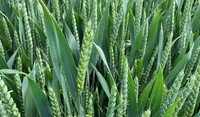
Powering up ryegrass control

Ryegrass biology and vigour
Ryegrass is a common arable weed in many parts of the UK, with Italian ryegrass (Lolium multiflorum) prevalent in the Midlands and South and typically more problematic than Perennial ryegrass (Lolium perenne).
One of the key reasons for the prevalence of Italian ryegrass is the simple fact that its seed can survive for extended periods of more than five years in favourable conditions.
Ryegrass is also exceptionally vigorous and is more competitive than black-grass: a population of just 5 plants/m2 can reduce cereal yields by 5%, with higher infestation rates known to cause losses of up to 89%.
Ryegrass also tillers more profusely than black-grass, with each plant capable of producing more than 20 heads and 5,000 seeds. As a result, populations can build up very rapidly.
Herbicide resistance
Herbicide resistant Italian ryegrass was first detected in the UK in 1990 and it is now present in at least 33 counties in England. In comparison, herbicide resistant black-grass was known to be present in 35 counties in 2017, so although the rye-grass problem is still in its infancy, it is an increasingly significant cause for concern, especially as resistance to ALS inhibitors was confirmed in 2012.
The main mechanism conferring resistance is enhanced metabolic non-target site resistance (NTSR) which can reduce the efficacy of most herbicides used against ryegrass.
ACCase (FOP, DIM and DEN) and ALS (sulfonylurea) target site resistance have also been confirmed in ryegrass species.
Cultural controls
In addition to the use of a robust programme of well-timed, accurately applied, target-specific herbicides, cultural controls are also essential in the fight against ryegrass.
As with all weeds, machinery hygiene is also key to preventing the spread of ryegrass seeds: all cultivation and seeding equipment should be thoroughly cleaned to reduce the movement of weed seeds between fields.
The creation of stale seedbeds, delaying drilling and using spring-sown crops will all help to reduce the ryegrass burden, but these techniques are less effective versus ryegrass than they are against black-grass.
Increasing the seeding rate of cereal crops can also be used as this effectively increases competition for light and nutrients, thereby enabling the crop to thrive at the expense of the rye-grass population.
Powering up with ADAMA’s herbicides
Practical ryegrass control programmes need to consider the germination profile of the field population in question, and the sensitivity of that population to different herbicide actives.
Recent trials carried out on behalf of ADAMA have shown that our 3-way herbicide, TOWER® (250 g/l chlorotoluron, 40 g/l diflufenican & 300 g/l pendimethalin) performs well on all strains of Italian ryegrass, giving a 98-100% reduction in fresh weight.
The same trials also indicated that while no populations of ryegrass were completely resistant, straight pendimethalin and straight prosulfocarb showed a reduced efficacy in each population, indicating a degree of herbicide insensitivity. Meanwhile, straight diflufenican showed more effect on insensitive strains of ryegrass, although it was the least effective residual active ingredient when used alone.
In contrast, the majority of the efficacy exhibited by TOWER can be apportioned to the inclusion of chlorotoluron: it is reassuring that chlorotoluron is not obviously affected by any of the known resistances in UK Lolium multiflorum species and that TOWER will therefore be a useful component at the pre- or early post-emergence timings.
The trial work clearly indicated that the following applications gave the best levels of ryegrass control:
- Peri-emergence treatment of TOWER plus prosulfocarb
- Peri-emergence treatment of TOWER followed by TOPIK® (240 g/l clodinafop-propargyl & 60 g/l cloquintocet-mexyl)
- Peri-emergence treatment of TOWER followed by TOPIK plus mesosulfuron and iodosulfuron.
Key ryegrass control tactics
- Delay drilling to create stale seedbeds
- For heavily infested land, consider a switch to spring cropping
- Ensure all cultivation and seeding machinery is kept clean to reduce weed seed migration
- Increase seeding rates to enable the crop to out-compete weeds
- Select an appropriate target-specific herbicide
- Ensure herbicides are applied accurately and at the optimum timing


